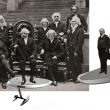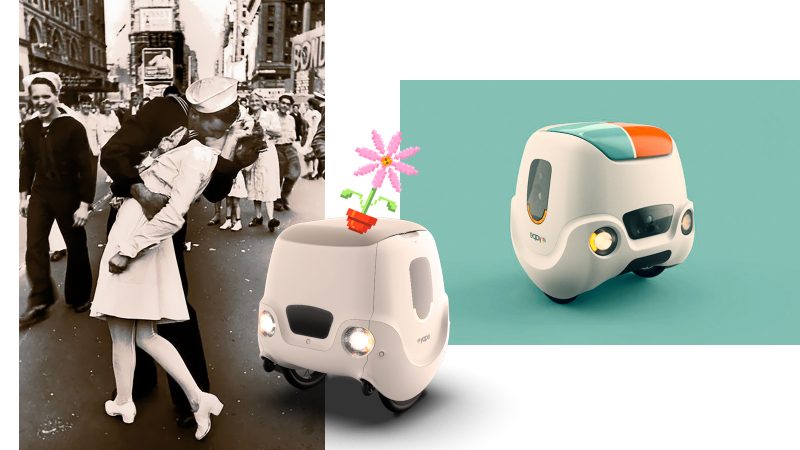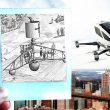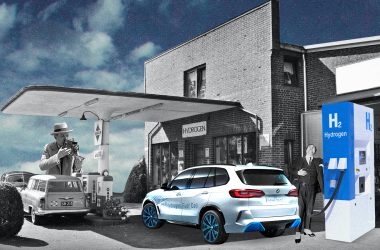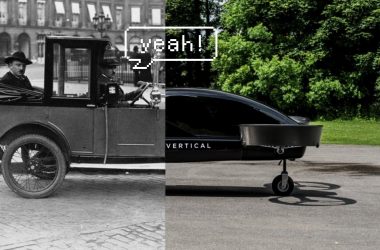The level of development of modern artificial intelligence promises us a lot of new, interesting and, most importantly, useful things. Its algorithms are so universal that soon we will start encountering robots in literally all areas of our lives. One of the promising areas, which is being successfully occupied by algorithms of artificial minds, is logistics. And of particular interest here is a part of it, which we call the “last-mile”.
Meet YAPE
This good-looking robot’s name is YAPE. It is developed by the specialists of an Italian company, E-Novia and designed to perform an unmanned shipment delivery into the hands of the recipient.
As we understood from its purpose, the robot is able to seamlessly move in an urban environment. It uses GPS technologies for its movement, integrated video cameras and special lasers with a rangefinder system. The movement of YAPE is also ensured by sensors placed throughout the city streets. They help to track the traffic and the functioning of traffic lights.
A robot uses a mobile app to communicate with a sender. The customer meets YAPE at the designated location, places a parcel (up to 70 kg) in the robot’s cargo compartment, then enters the recipient’s address into the software. The recipient has to register himself in the YAPE system so that the delivery robot would be able to identify them using face recognition technology. Only then will the robot grant the person access to its cargo compartment.

YAPE covers the distance from point A to point B using electric motors, which are powered by a built-in battery. The battery has enough power to travel 80 kilometers, moving at the speed of 6…20km/h. YAPE’s route consists of sidewalks, bike lanes and other parts of the city that exclude the possibility of collision with cars, buses and other kinds of public transport.
About the E-Novia company
E-Novia is a progressing Italian company, working in the field of turning products of intellectual property into ready-to-use technical solutions.
One of the company’s key objectives is the search for prospective developments, in which the company itself sees a high practical potential. With this goal in mind, the specialists of E-Novia are actively cooperating with well-known universities and large research centers.

The principle of E-Novia’s work is this: the company monitors the developments of the scientists and evaluates how close is each one of them to an actual production and further application in people’s lives. The next step of E-Novia’s activity is the adaptation of a chosen product of intellectual labor to the current production capabilities or the creation of new facilities with the goal of production of a chosen product.
Headquarters of E-Novia are located in Milan (Italy), the company is private, and was founded in 2012, currently its director is Vincenzo Russi. You can learn more about E-Novia’s work on the website e-novia.it.
Will YAPE solve the problem of last-mile?
Anybody who has ever been involved in transportation logistics knows what kinds of problems this so-called “last-mile” brings. The last-mile is the final link in the delivery chain, which results in the customer receiving the goods.
This stage is very important for the following reasons:
- Unlike the previous stages, in which thousands of parcels move in one general direction, the last-mile becomes individual. We have to find one, specific addressee and deliver the parcel to them personally.
- The last-mile stage bears the whole burden of responsibility not only for its segment of the journey, but also for all the previous stages of delivery. After all, the recipient will get an impression about the entire delivery process as a whole, judging only by the quality of the last mile.
- Many parcels are critically sensitive to storage conditions. “The Last Mile” is no exception. It is very important to get the parcel to the addressee without compromising storage conditions at the last stage of delivery.
The developers of YAPE tried to provide all the conditions to make the robot-delivery algorithm able to bypass all the shortcomings of the last-mile stage. A convenient mobile app and error-free identification system ensures that the package will be delivered to the recipient. A special container for the shipment ensures safe storage of the package during its delivery. These and many other features help YAPE robot make the last-mile stage as comfortable as possible for the recipient.
The first delivery in Japan
There is probably no country in which people are more drawn to innovations than in Japan. We associate this country with super-modern cars, high-performance electronics, and a high degree of robotization of human daily activities.
So, it doesn’t come as a surprise to anyone that the YAPE robotic courier has become a welcome guest in Japan. It has been welcomed with open arms and used for the benefit of the people and with concern for the environment, which always has been the foundation of any innovative technology for Japanese people and always will be.

The main postal operator of Japan, Japan Post and its partner, Drone Future Aviation, which develops modern delivery methods, has drawn their attention to an interesting development of the E-Novia company. The companies are paying great attention to testing the YAPE delivery robot during the course of its delivery work of postal and other kinds of goods. There will be work done to improve the suspension of the undercarriage, there also will be tests of the robot’s lifting capacity and ability to maintain the right temperature in the cargo chamber.
What awaits YAPE in the future?
Unmanned logistics offer huge prospects for the future. The YAPE robot is one of the pioneers of efficient ground delivery. Unlike its aerial counterparts, YAPE can boast with the following advantages:
- The guarantee of cargo’s safety
- Minimization of emergency situations
- Full autonomy
- Inexpensive maintenance
- Reliable and convenient identification system
Developers thoroughly monitor the YAPE delivery robot’s performance in a real-world environment. This feedback will help to make the robot better and keep its position as a leader in the field of unmanned ground delivery in the future.

